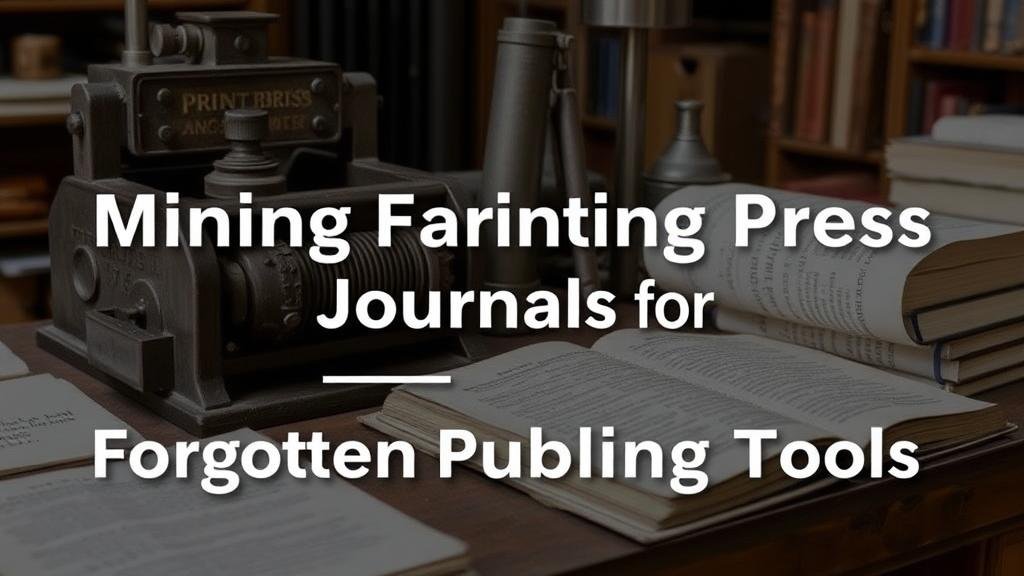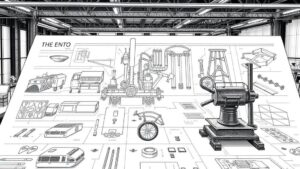Mining Early Printing Press Journals for Forgotten Publishing Tools
Mining Early Printing Press Journals for Forgotten Publishing Tools
The advent of the printing press in the 15th century revolutionized the dissemination of knowledge, enabling the mass production of books and fostering greater access to information. But, alongside the favored works of literature and scientific texts, minor publications, such as journals, often failed to receive the attention they deserve. This article examines early printing press journals, particularly focusing on the forgotten publishing tools they reveal–tools that hold significant value for contemporary publishing practices and historical scholarship.
The Historical Context of Early Printing Press Journals
The printing press, invented by Johannes Gutenberg around 1440 in Mainz, Germany, marked a transformative moment in the history of communication. By the late 17th and early 18th centuries, the proliferation of printing led to the rise of periodicals, with one notable example being “The Spectator,†first published in London in 1711. Early journals served a variety of purposes, from disseminating news to sharing scholarly research in fields such as chemistry and philosophy.
According to the International Association of Scientific, Technical and Medical Publishers, the first scholarly journals emerged in the late 1600s. These publications were characterized by their collaborative nature and commitment to reporting new research, all of which set a precedent for future academic publishing models. But, many early journals remain under-researched and their tools often forgotten.
Identifying Forgotten Tools Through Content Analysis
To uncover the publishing tools embedded within early printing press journals, comprehensive content analysis must be employed. This involves examining texts for typographical conventions, layout formats, and reproducible journalistic techniques. Tools such as typesetting, wooden type blocks, and early design frameworks can be extracted from these publications, which provide insights into the methodologies of early publishers.
- Typesetting Techniques: Early journals employed manual typesetting methods, which involved arranging individual letters on a composing stick. This technique had a significant impact on the aesthetics of printed text.
- Wooden Type Blocks: Some journals utilized carved wooden blocks to reproduce images or decorative initials, providing a tactile dimension to the printed material.
Case Studies: Forgotten Journals and Their Contributions
The review of specific early journals reveals exciting examples of lost publishing tools. One such case is “Philosophical Transactions of the Royal Society,†established in 1665. This journal included letters to the editor and featured a variety of scientific topics, emphasizing community engagements–an early acknowledgement of the peer-review process.
Another noteworthy example is “Journal des Sçavans,†initiated in France in 1665, which is credited as one of the first scholarly journals in history. It featured reviews of books and acted as a medium of scholarly communication, setting the stage for later publishing norms.
Modern Applications of Historical Insights
Understanding the publishing tools used in early journals serves contemporary publishing in several ways. The integration of historic practices can enhance the authenticity and engagement of modern publications.
- Incorporating Traditional Techniques: Modern publishers can experiment with typefaces and layouts inspired by historical journals to appeal to niche markets.
- Digital Reproduction of Early Techniques: The rise of digital presses offers a platform for redistributing and reinterpreting these early methods, making them accessible to new generations of readers.
Challenges and Future Directions
While mining early printing press journals can yield valuable insights, challenges remain regarding preservation and access. Many original journals are fragile and rare, with collections maintained in specialized libraries. But, digital archiving is actively addressing these issues. Initiatives such as the “Early English Books Online†project digitize early prints, making them more accessible to researchers and historians.
Future research should focus on comparative analyses between different early journals to understand regional variations in publishing methods and their influences. Also, engagement with interdisciplinary teams comprising historians, librarians, and software developers will create robust platforms for collaborative learning.
Conclusion
The exploration of early printing press journals illuminates forgotten publishing tools that echo within todays publishing landscape. By understanding these foundational elements, modern publishers can not only revive historical practices but also foster a deeper appreciation for the evolution of literary and scientific communication. Harnessing these insights can pave the way for innovation in today’s publishing world while honoring the traditions of the past.



